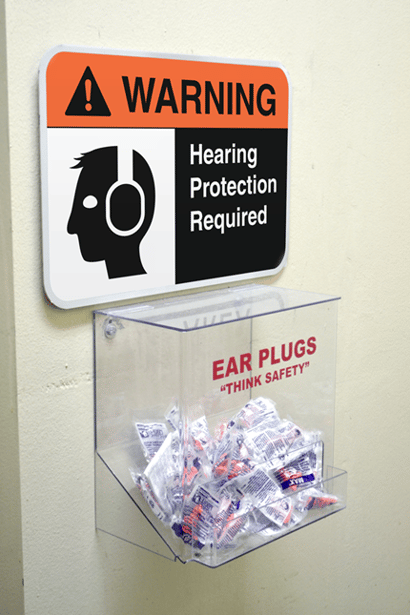Do You Hear What I Hear? Tips for Conservation
03
February,
2023
2 MINUTE READ

Industrial machines, welding, construction, and mining are just a few types of loud activities that can create hearing hazards. However, any noise in the workplace, whether one-time or consistent, can cause significant damage, and workers can lose their ability to hear over time. Just because a workplace is loud does not mean there are not ways to make it safer. There are simple tools and resources any workplace can use to improve hearing conservation and meet OSHA hearing protection requirements.
Listen to the Data
According to the U.S. Bureau of Labor Statistics, more than 20,000 workplace hearing loss cases occur annually, many resulting in permanent hearing loss. In March, a manufacturing facility in Florida was cited by OSHA for exposing workers to several health and safety hazards, which included violations for failing to provide a hearing conservation program.
"Employers are required by law to protect the safety and health of their workers," said Condell Eastmond of OSHA. "OSHA offers compliance assistance resources and specialists that can help employers identify and correct hazards in their workplaces."
Hearing loss, which worsens with age, is the third most common chronic physical condition in the U.S., according to the Center for Disease Control and Prevention. The data on the need to improve hearing protection programs at work is screaming. Importantly, each worker's hearing protection needs and work duties are individual. When it comes to accommodations, there is no one-size-fits-all approach. Demonstrate why accommodation or changes increase worker productivity.
Hearing Protection
 Losing the ability to hear over time might happen so gradually that it is not as noticeable. Do you raise your voice to speak with someone who is only an arm's length away? How can you easily protect your hearing at work? Here are a few hearing loss prevention strategies that any workplace can add to its hearing protection program.
Losing the ability to hear over time might happen so gradually that it is not as noticeable. Do you raise your voice to speak with someone who is only an arm's length away? How can you easily protect your hearing at work? Here are a few hearing loss prevention strategies that any workplace can add to its hearing protection program.
- Check the Workplace Noise Level: Use a sound level meter app, which should read below 85dBA.
- Take a Break: Remove yourself from the work environment for noise breaks. Reduce time near noise hazards.
- Machinery/Equipment Maintenance: If you can't use quieter machinery or equipment, then it's worthwhile to keep it maintained and lubricated. Use enclosures or another type of barrier to help limit sounds.
- Safe Distancing: Keep a safe distance from noise hazards.
- PPE: Hearing protection such as foam plugs and headphones are 99% effective when used properly.
- Chemicals: Use less toxic or non-toxic chemicals, PPE such as gloves and eye protection and a respirator, and follow chemical safety best practices.
While implementing the points above, workplaces must still create a hearing protection program that is conducive to workers. After a written plan is in place, educate and train workers on these safety best practices. Keep PPE available and correct for the type of noise hazards. Signs are a great way to alert people of noise danger, protection whereabouts, and whether PPE is required. Reinforce hearing safety by utilizing other visual communication reminders such as traffic signs and floor marking to mark noise danger and safe working boundaries. Set up reasonable accommodations and take hearing loss seriously by protecting workers over the long run.
RELATED RESOURCES

NIOSH Study Links Workplace Noise, Heart Health
The National Institute of Occupational Safety and Health conducted a study about noise in the workplace and ...
Read
U.S. Department of Labor to Help Combat Hearing Loss
Together with the Mine Safety & Health Administration (MSHA) and the National Institute for Occupational ...
Read
Respiratory Health Toolkit
OSHA and the National Institute for Occupational Safety and Health (NIOSH) released the Hospital Respiratory ...
Read.png)


